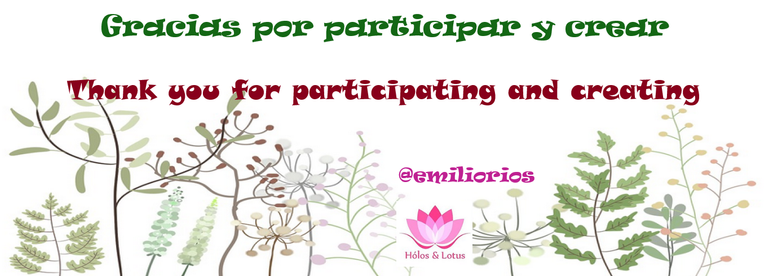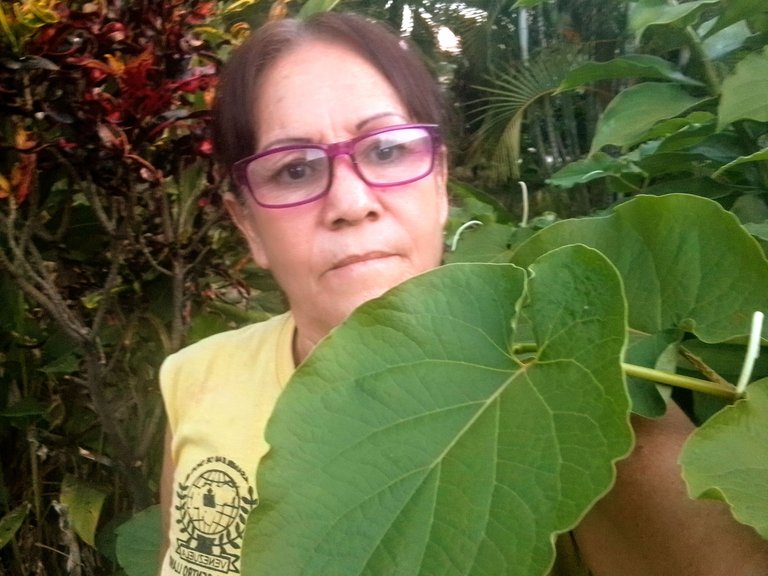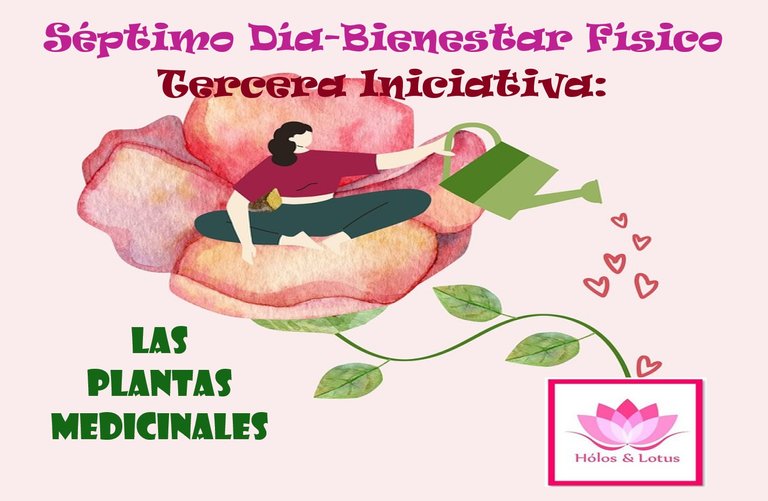

Esta nueva iniciativa de nuestra columna, Séptimo Día-Bienestar Físico, pone a prueba los conocimientos heredados de nuestros padres y abuelos sobre remedios caseros con plantas.
Las plantas medicinales han formado parte de nuestra cultura y de nuestros esquemas terapéuticos inmediatos para enfermedades que no ameritan una intervención médica de urgencia; aunque a veces sí son efectivas en casos fuertes.
¿De qué manera podemos enseñarle a otros el uso de plantas que podemos tener en nuestros propios hogares? ¿Cuáles son esas plantas que tanto nos han ayudado desde tiempos antiguos a nuestros ancestros y que hoy representan una buena opción en nuestros hogares para calmar ciertos malestares?
Esta es mi nueva iniciativa, y trata sobre cuál es tu planta medicinal más querida y porqué.

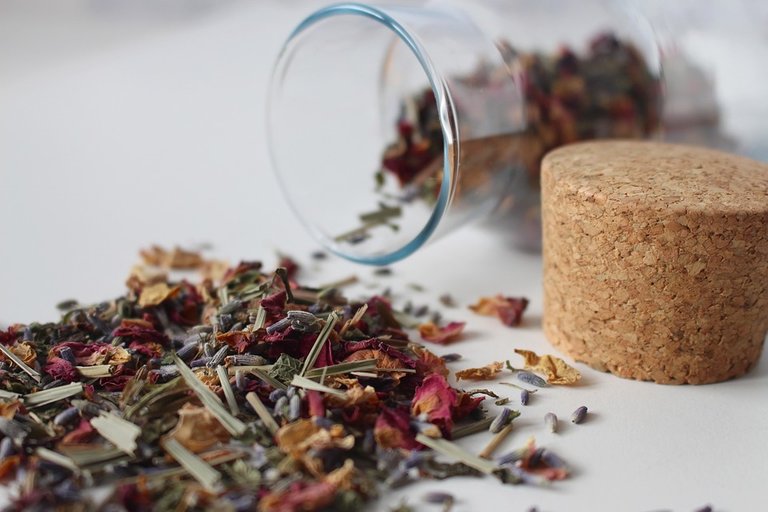
Criticando las plantas medicinales
Pero también, para nadie es un hecho desconocido que las plantas medicinales han sido muy atacadas al comparárseles en la medicina tradicional a los medicamentos tradicionales.
Los fármacos que han ido especializándose con laboratorios farmacológicos, tienen una efectividad que nosotros los médicos pocas veces ponemos en duda y que sometemos a cientos y miles de estudios, anualmente, para probar sus efectos y sus contraindicaciones.
Sin embargo, también tenemos que enfrentar una gran verdad, y es que gran parte de los medicamentos tradicionales que consumimos se crean a base de las mismas plantas.
Por ejemplo, tenemos el ácido acetilsalicílico, la popular aspirina, que simplemente procede de la corteza del sauce blanco; e igualmente, los digitálicos, que nos ayudan a mantener un ritmo cardíaco en pacientes con problemas de insuficiencia, también provienen de la planta Digitalis, la popular Dedalera; de las hojas de la popular Dedalera.
Ahora bien, creemos que cada una de las opciones, sean tradicionales o naturales de los fármacos, estos tienen su lugar y su utilidad a su momento.
Algo sencillo (médicamente, disculpen) como un dolor o una inflamación pasajera abdominal, un trastorno gastrointestinal como unas náuseas; o también un problema de tipo respiratorio que moleste como una tos en un momento de un síndrome gripal, puede ser tratado con una planta o una hierba medicinal.
Sin embargo, estas no están exentas de tener efectos secundarios y hasta interacciones con otros medicamentos, por lo tanto, es importante que aprendamos a manejarla, a conocerlas y a entender lo que nuestros abuelos nos han dejado de conocimientos naturales para poder utilizarlas en el momento indicado.
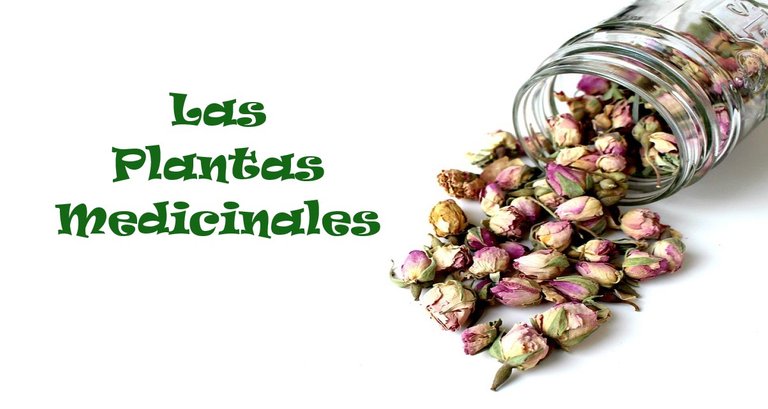
¿Qué son las plantas medicinales?
Todo vegetal que tiene propiedades beneficiosas para la salud y que puede ser utilizado por ingestión o por aplicación con el método de cocción correcto o simplemente fresco, puede denominarse una planta medicinal.
Estás sustancias, desde la antigüedad se han utilizado; y ya en el Papiro de Ebers, que es uno de los tratados médicos y de farmacopea más conocidos, hecho en Egipto alrededor del año 1550 antes de Cristo, se explican más de medio millar de plantas medicinales.
Así, el conocimiento ha ido pasando de generación en generación; y la Organización Mundial de la Salud u OMS hoy en día específica que existe un alto porcentaje de la población que usa hierbas medicinales en algún momento.
El problema es que no están reguladas, por lo que podemos darle usos incorrectos y puede haber contraindicaciones.
Tan solo recordemos que en el Amazonas, históricamente, se utilizaron muchas de las plantas medicinales como anestesia y como sedantes para intervenciones quirúrgicas como las trepanaciones craneales que hacían nuestros ancestros americanos; así de potente son muchas plantas.
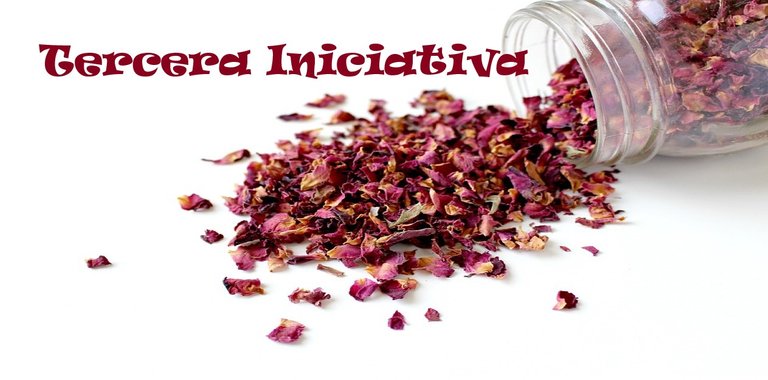
Mi planta preferida:
7mo Día-Bienestar Físico. Tercera Iniciativa:
La Uña de Gato
Conjuntamente con mis estudios de psiquiatría comencé a incursionar en los estudios de medicina naturista.
Y es que las dificultades que conseguí a lo largo de mi preparación en terapéutica psiquiátrica, debido a la cantidad de efectos colaterales que los psicotrópicos y otros fármacos utilizados en el área, le producían al paciente, me hizo reflexionar mucho sobre la terapéutica que como médico estaba administrando.
De allí que comencé a estudiar las plantas y las terapias alternativas que podrían ayudar al paciente de alguna manera menos tóxica y menos peligrosa.
Fueron muchas las cantidades de plantas que comencé a conocer y a probar en pacientes; y que las había estudiado a través de muchos libros y portales de la red. Y descubrí que en la Amazonía teníamos excelentes vegetales que podrían ser de utilidad para trastornos de difícil tratamiento.
Una de esas plantas, la Uncaria tomentosa, me llamó poderosamente la atención por la cantidad de estudios que tenía y que ha ido acumulando a lo largo de los años.
Tuve la oportunidad de probarla en muchos pacientes y a nivel personal como antiinflamatoria; y la utilice con efectos muy beneficiosos sobre el paciente y sobre mí mismo.
Desde entonces, esta planta ha estado dentro de los esquemas terapéuticos que utilizo en inflamaciones de tipo articulares, para cicatrización de heridas, en problemas de hemorroides y como una de las alternativas positivas que son utilizadas para aumentar el funcionamiento del sistema inmunológico de los pacientes.
Tengo que corroborar que han sido los chamanes de nuestra América los que han dejado este legado sobre la Uncaria tomentosa o uña de gato; y ha sido la investigación farmacológica la que ha sometido a esta planta a innumerables estudios clínicos que corroboran sus propiedades antiinflamatorias, antivirales, antioxidantes, inmunoestimulantes y equilibrantes de las reacciones del organismo de tipo inmunitaria ante patologías como la artritis reumatoidea y hasta la misma psoriasis.
Existen estudios que hablan de la regeneración de glóbulos blancos, reforzando la respuesta inmunitaria; y hoy en día se vende como uno de los medicamentos anticancerosos más efectivos que existen.
Mi elección, para esta tercera iniciativa, es la uña de gato, porque durante muchos años me ha brindado en mis esquemas terapéuticos opciones efectivas para el tratamiento, con pocos efectos colaterales sobre mis pacientes.
Esta planta contiene en su composición química alcaloides muy beneficiosos que han sido estudiados; así como derivados terpénicos de grandes efectos antioxidantes contra radicales libres y el estrés oxidativo.
Igualmente, por tener fitoquímicos fuertes, ha sido estudiado minuciosamente en sus efectos tóxicos, aunque su acción colateral ha sido mínima.
Estudios como el de Quintela y Lock de Ugazen (2003); Flores-Aguilar y Flores-Rivera (2018) y también, Lahoud S.; Gutièrrez M; Romero D. y Ortiz (2000) son unos pocos de los cientos que existen sobre esta planta y que hablan, no solo del efecto cicatrizante y antiinflamatorio, sino de sus componentes químicos.

Banner tomado de @holos-lotus, publlicación día Oct 25, 2022
Participar en la dinámica
De todas maneras, no es necesario tener conocimientos tan específicos sobre una planta para que podamos compartir nuestras experiencias beneficiosas y nuestras expectativas respecto a la preferencia que tenemos sobre algunas de ellas.
Estoy seguro de que si le pregunto a mi mamá, ella hablará de la manzanilla y de la sábila en forma inmediata.
Se trata de compartir con otros, las plantas que a diario usamos, que han sido el legado de la información que nos han dejado nuestros antepasados.
Y de una manera bastante experiencial, ofrecerle a los demás nuestras reflexiones, nuestras historias y la manera como nosotros acostumbramos a utilizarlas y hasta consumirlas.
Es un ejercicio para que todos volvamos la vista a la naturaleza, de una u otra forma; y para que dejemos de utilizar, en primera instancia, químicos y fármacos que solo deben ser administrados indicados desde el punto de vista médico.
La automedicación es un problema grave que enfrentamos los profesionales de la salud.
Y esta es una manera excelente que tenemos de enseñar a los demás y de prevenir la automedicación química o farmacológica, en nuestros hogares.
Estoy seguro, repito, de que muchos, sino todos, tenemos en nuestra cotidianidad experiencia del uso de plantas medicinales; y hasta las tenemos dentro de nuestras despensas y en nuestros cajones de medicamentos o de primeros auxilios.
Desarrollar:
Sobre la base de tu experiencia o la experiencia familiar que tienes:
¿Cuál es la planta medicinal que utilizas o utilizan en tu hogar con frecuencia?
¿Dónde y cómo aprendiste sobre ella?
¿Qué beneficios te ha dado o has visto al utilizarla?
¿Cómo la recomiendas?
¿Compartirías una historia o anécdota con alguna planta medicinal?
Condiciones:
1.- Escribe un post en nuestra comunidad @holos-lotus con el tema planteado y utilizando una, algunas o todas las preguntas planteadas. Usa de Inicio:
7mo Día-Bienestar Físico. Tercera Iniciativa: “La planta que elijas compartir”
2.- Los posts deben ser publicados directamente en la Comunidad @holos-lotus aquí: Holos&Lotus y no se permite el crossposting.
3.- La publicación debe tener mínimo 400 palabras en cada idioma, el contenido debe ser original y respetuoso de los derechos de autor; por eso, ten cuidado de señalar las fuentes de las imágenes y recursos que uses para apoyar tu publicación.
4.- Invita al menos dos Hivers a unirse a este reto.
5.- Como bien dice @damarysvibra: Nos gusta crear comunidad, y por ello te invitamos a comentar al menos otros 3 posts de usuarios participantes en la iniciativa.
6.- Menciona tus apoyos al dejar el enlace de tu participación en los comentarios de esta publicación.
7.- Apoya esta publicación -si es de tu agrado- y comparte –reblog- para que más usuarios puedan unirse al Concurso.
8.- Por último, utiliza entre las primeras etiquetas los hashtags #septimodia #sevenday #plantamedicinal #naturalmedicine #wellness . También puedes utilizar entre tus etiquetas, la de algunos de nuestros aliados: #hispapro, #r2cornell #ecency.
Sin duda alguna y con gran expectativa, espero tu participación honesta, confidencial –como siempre- y sobre todo, amistosa o fraternal en esta Tercera Iniciativa de la Columna Séptimo Día-Bienestar Físico de C/Holos&Lotus

Mi invitación es para todos; y para ampliar mi contenido y apoyo en la materia, hago extensiva la invitación a @naturalmedicine @parauri @minismallholding y a @chaodietas
Amplía tus conocimientos sobre la Uña de Gato con esta síntesis de Cuerpomente:
cuerpomente.com


7th Day-Physical Wellness. Third Initiative: Medicinal Plants in My Home
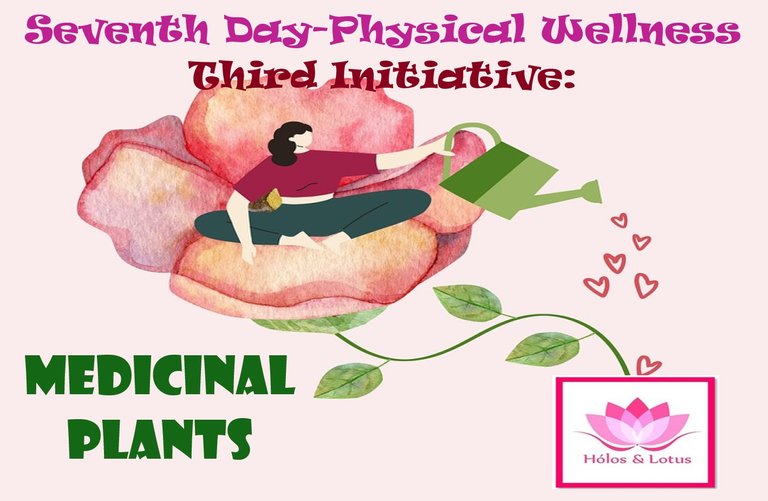

This new initiative of our column, Seventh Day-Physical Wellness, tests the knowledge inherited from our parents and grandparents about home remedies with plants.
Medicinal plants have been part of our culture and of our immediate therapeutic schemes for illnesses that do not merit urgent medical intervention; although sometimes they are effective in strong cases.
How can we teach others the use of plants that we can have in our own homes? What are those plants that have helped our ancestors so much since ancient times and that today represent a good option in our homes to soothe certain ailments?
This is my new initiative, and it is about what is your most loved medicinal plant and why.


Criticizing medicinal plants
We all, or the vast majority, use medicinal plants in our homes that help us and get us out of trouble.
But also, for no one is an unknown fact that medicinal plants have been very much attacked by comparing them in traditional medicine to traditional medicines.
The drugs that have been specializing with pharmacological laboratories, have an effectiveness that we doctors rarely doubt and that we submit to hundreds and thousands of studies, annually, to prove their effects and contraindications.
However, we also have to face a great truth, and that is that most of the traditional medicines we consume are created from the same plants.
For example, we have acetylsalicylic acid, the popular aspirin, which simply comes from the bark of the white willow; and likewise, digitalis, which helps us to maintain a heart rhythm in patients with heart failure problems, also comes from the Digitalis plant, the popular Dedalera; from the leaves of the popular Dedalera.
Now, we believe that each of the options, whether traditional or natural drugs, have their place and their usefulness at the time.
Something simple (medically, sorry) as a pain or a temporary abdominal inflammation, a gastrointestinal disorder such as nausea, or a respiratory problem that bothers as a cough at a time of a flu syndrome, can be treated with a plant or a medicinal herb.
However, these are not exempt from having side effects and even interactions with other medications, therefore, it is important that we learn to handle them, to know them and to understand what our grandparents have left us of natural knowledge to be able to use them at the right time.
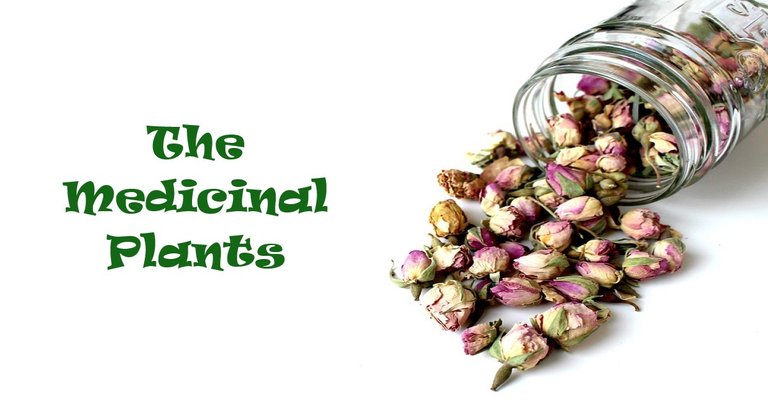
What are medicinal plants?
Any vegetable that has beneficial properties for health and that can be used by ingestion or by application with the correct cooking method or simply fresh, can be called a medicinal plant.
These substances have been used since ancient times; and already in the Ebers Papyrus, which is one of the best known medical and pharmacopoeia treatises, made in Egypt around the year 1550 B.C., more than half a thousand medicinal plants are explained.
Thus, knowledge has been passed from generation to generation; and the World Health Organization or WHO nowadays specifies that there is a high percentage of the population that uses medicinal herbs at some point.
The problem is that they are not regulated, so we can use them incorrectly and there may be contraindications.
Just remember that in the Amazon, historically, many of the medicinal plants were used as anesthesia and as sedatives for surgical interventions such as cranial trepanations made by our American ancestors; so powerful are many plants.
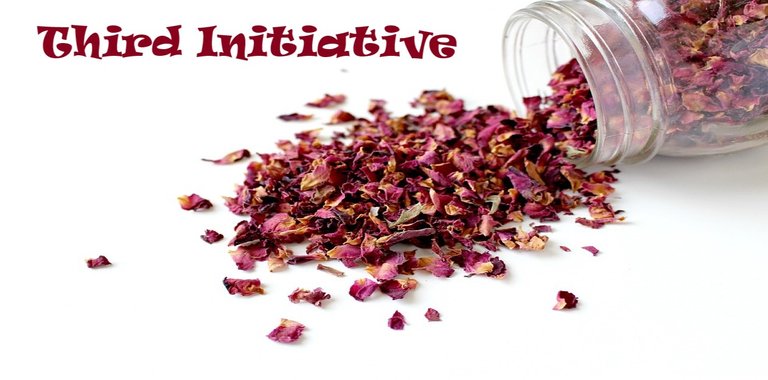
My favorite plant:
7th Day-Physical Wellness. Third Initiative:
Cat's Claw
Along with my psychiatry studies, I began to venture into the study of naturopathic medicine.
The difficulties I encountered during my training in psychiatric therapeutics, due to the amount of side effects that psychotropic and other drugs used in the area produced in the patient, made me reflect a lot about the therapeutics that I was administering as a doctor.
From there I began to study the plants and alternative therapies that could help the patient in a less toxic and less dangerous way.
There were a lot of plants that I began to know and to test on patients; and that I had studied through many books and web portals. And I discovered that in the Amazon we had excellent plants that could be useful for disorders that are difficult to treat.
One of those plants, Uncaria tomentosa, caught my attention because of the amount of studies that it had and that it has accumulated over the years.
I had the opportunity to test it on many patients and on a personal level as an anti-inflammatory; and I used it with very beneficial effects on the patient and on myself.
Since then, this plant has been within the therapeutic schemes that I use in joint inflammations, wound healing, hemorrhoid problems and as one of the positive alternatives that are used to increase the functioning of the immune system of patients.
I have to corroborate that it has been the shamans of our America who have left this legacy on Uncaria tomentosa or cat's claw; and it has been the pharmacological research that has subjected this plant to countless clinical studies that corroborate its anti-inflammatory, antiviral, antioxidant, immunostimulant and balancing properties of the body's immune reactions to pathologies such as rheumatoid arthritis and even psoriasis itself.
There are studies that speak of the regeneration of white blood cells, reinforcing the immune response; and today it is sold as one of the most effective anticancer drugs that exist.
My choice, for this third initiative, is cat's claw, because for many years it has provided me with effective treatment options in my therapeutic schemes, with few side effects on my patients.
This plant contains in its chemical composition very beneficial alkaloids that have been studied; as well as terpene derivatives of great antioxidant effects against free radicals and oxidative stress.
Likewise, because it has strong phytochemicals, it has been thoroughly studied for its toxic effects, although its collateral action has been minimal.
Studies such as Quintela y Lock de Ugazen (2003); Flores-Aguilar y Flores-Rivera (2018) and also, Lahoud S.; Gutièrrez M; Romero D. y Ortiz (2000) are a few of the hundreds that exist on this plant and that speak, not only of the healing and anti-inflammatory effect, but also of its chemical components.

Banner taken from @holos-lotus, publication day Oct 25, 2022
Participate in the dynamic
Anyway, it is not necessary to have such specific knowledge about a plant for us to share our beneficial experiences and our expectations regarding the preference we have about some of them.
I am sure that if I ask my mom, she will immediately talk about chamomile and aloe vera.
It's about sharing with others, the plants that we use on a daily basis, that have been the legacy of information left to us by our ancestors.
And in a very experiential way, to offer to others our reflections, our stories and the way we are used to use them and even consume them.
It is an exercise for all of us to look back to nature, in one way or another; and to stop using, in the first instance, chemicals and drugs that should only be administered under medical indications.
Self-medication is a serious problem faced by health professionals.
And this is an excellent way for us to teach others and to prevent chemical or pharmacological self-medication in our homes.
I am sure, I repeat, that many, if not all of us, have in our daily lives experience of the use of medicinal plants; and we even have them inside our pantries and in our medicine or first aid drawers.
Develop:
Based on your experience or the family experience you have:
What is the medicinal plant that you use or they use in your household frequently?
Where and how did you learn about it?
What benefits has it given you or have you seen from using it?
How do you recommend it?
Would you share a story or anecdote with any medicinal plant?
Conditions:
1.- Write a post in our community @holos-lotus with the topic posed and using one, some or all of the questions posed. Use as Start:
7th Day-Physical Wellness. Third Initiative: "The plant you choose to share"
2.- Posts must be published directly in the @holos-lotus Community here: Holos&Lotus and crossposting is not allowed.
3.- The post must be at least 400 words in each language, the content must be original and respectful of copyrights; therefore, be careful to point out the sources of the images and resources you use to support your post.
Invite at least two Hivers to join this challenge.
As @damarysvibra says: We like to create community, so we invite you to comment on at least 3 other posts from users participating in the initiative.
6.- Mention your support by leaving the link to your participation in the comments of this post.
7.- Support this publication -if you like it- and share -reblog- so that more users can join the Contest.
Finally, use among the first tags the hashtags #septimodia #sevenday #plantamedicinal #naturalmedicine #wellness . You can also use the hashtags of some of our allies: #hispapro, #r2cornell #ecency.
Without any doubt and with great expectation, I look forward to your honest, confidential -as always- and above all, friendly or fraternal participation in this Third Initiative of the Seventh Day-Physical Wellness Column of C/Holos&Lotus.

My invitation is for everyone, and to expand my content and support on the subject, I extend the invitation to @naturalmedicine @parauri @minismallholding and @chaodietas.
Expand your knowledge about Cat's Claw with this synthesis of Cuerpomente:
cuerpomente.com

Emilio Rios - Venezuela
@emiliorios

Barras separadoras, logo de English editado en Paint:
Separator bars, English logo edited in Paint:
Pixabay-Kranich17Agradecimiento final editado en Paint:
Final thanks edited in Paint:
Pixabay- OwantanaSi deseas apoyar a nuestras comunidades hispanas, vota por ellas en:
If you want to support our Hispanic communities, vote for them at:
@la-colmena: https://vote.hive.uno/@la-colmena

Síguenos en Twitter / Follow us on Twitter:
@HolosLotus Entra a nuestro servidor de Discord en este enlace: / Log in to our Discord server at this link:


